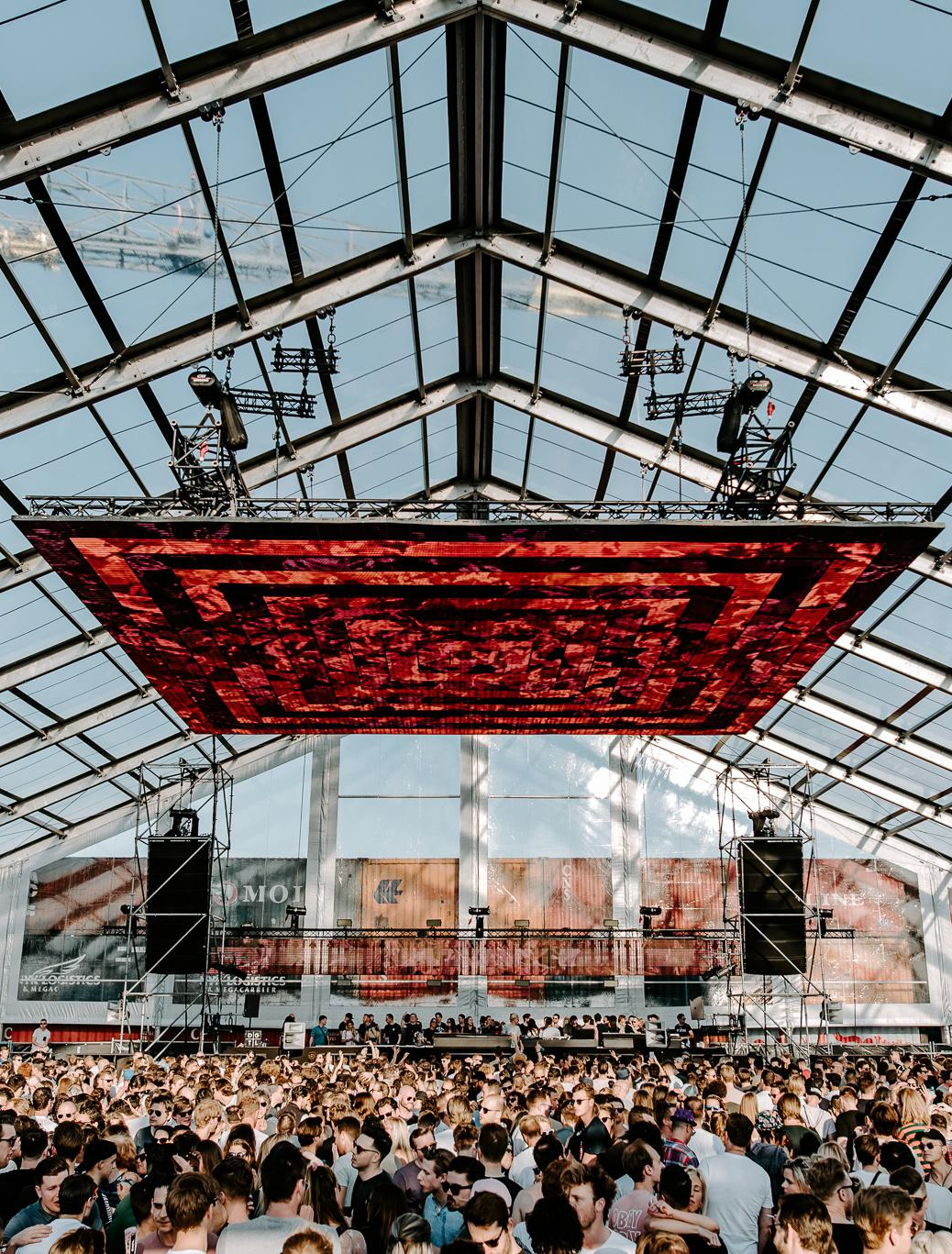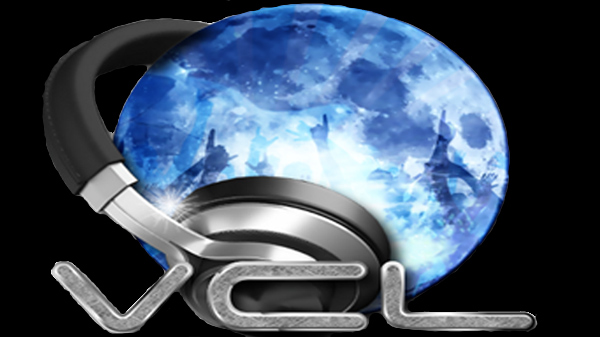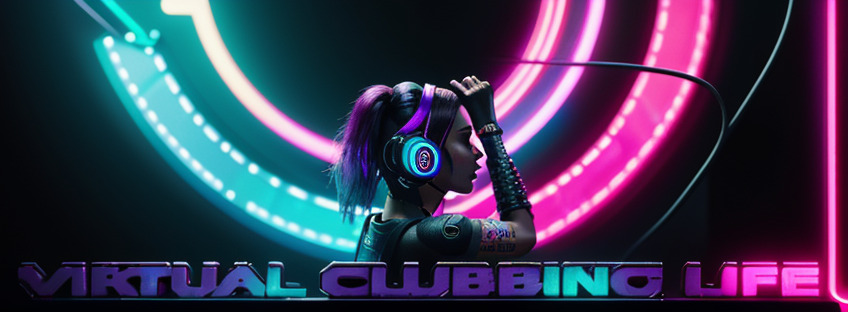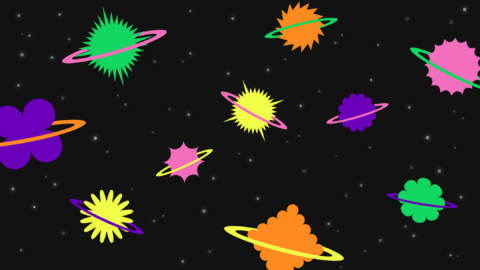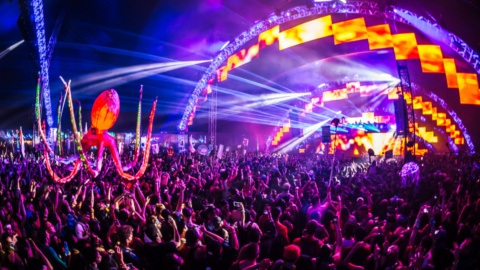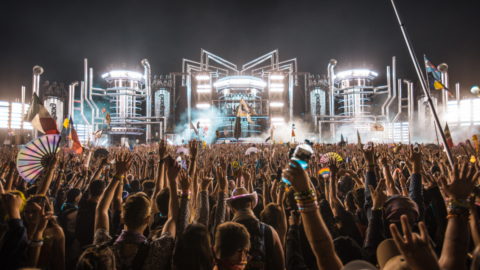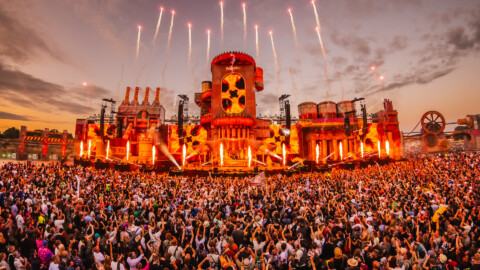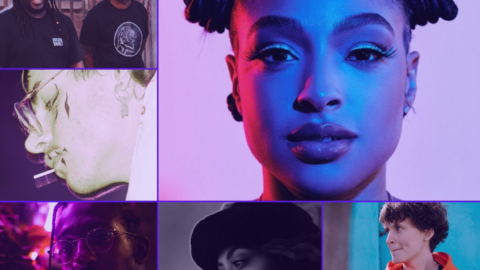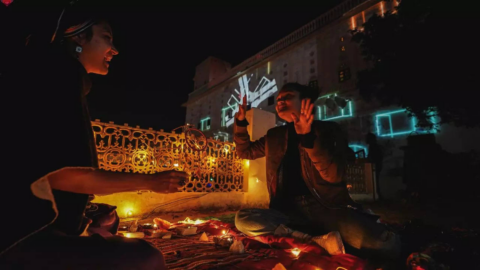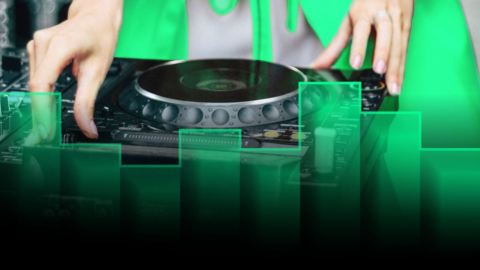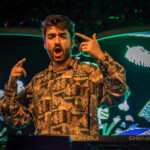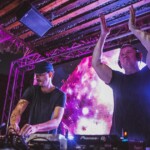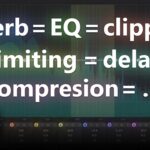DGTL.
Music festival DGTL returns with its flagship event in its expansive global festival series, DGTL Amsterdam 2022, which takes place across three days, Friday, April 15 through Sunday, April 17. The star-studded lineup of over 80 artists boasts the likes of Âme & Dixon, Chandler & Hot Since 82, TSHA, Paul Kalkbrenner, Ana Lilia, Chloé and more. DGTL Amsterdam 2022 features seven stages with global superstars, revered underground icons and explosive newcomers.
The pillars of the festival are music, art and sustainability, and DGTL is the first circular electronic music festival, with a strong focus on topics such as energy, sanitation, food, raw materials and mobility. DGTL has already extended its footprint beyond its home base in Amsterdam with editions in Barcelona, Madrid, Santiago, São Paulo, Tel Aviv and Bangalore (India).
Here, festival director Ellen Evers, sustainability manager Mitchell van Dooijeweerd and global marketing director Bram Merkx share with Forbes the festival’s commitment to sustainability, what makes this year’s festival different from previous ones and more.
Lisa Kocay: DGTL Festival in Amsterdam is the world’s first 100% sustainable festival. Why is being a 100% sustainable festival so important to you?
Ellen Evers: “As a festival, we think we should take a frontrunner role for societies. People generally come to a festival with an open mind: to meet new people, to discover new music. It’s an ideal place to plant seeds in people’s minds about sustainability, too. We show visitors our ideas for society when it comes to resource management, food and energy consumption. These are ideas that they can take home and hopefully incorporate into their personal life as well.”
Kocay: DGTL has created a circular blueprint that can be applied to both a festival and a city. What does this blueprint look like?
Mitchell van Dooijeweerd: “We turn our festivals into a living lab for circular innovation in urban environments. By continuously innovating on the festival site, we hope to make discoveries that can be applied to major cities. After years of development, our sustainability approach has resulted in the DGTL framework, which describes the complete metabolism of the festival and it is also applicable to cities.
“We started creating projects to close material loops and get closer to zero emissions. But we needed something more specific and understandable. Therefore, we created the framework, which consists of five main themes: materials, food, energy, mobility and water and sanitation. Within these themes, the challenge is to close all cycles, [and] if this succeeds we can speak of a circular festival. In this way, we are leaving behind a structural trace. Not a trace of waste, but a trace of applicable solutions instead. Through sharing knowledge and our vision, we stimulate sustainable participation amongst our visitors and partners. We inspire others by leading by example to leave a structural trace while sharing our progress openly and honestly along the way.
“Resources: Materials are cycled at the highest possible value [and] residual waste does not exist. Food: Natural resources are used responsibly, food waste is prevented and residual flows are being reused at the highest possible value. Energy: All energy comes from renewable energy sources. Water: Use of freshwater is reduced as much as possible and nutrients are recovered from wastewater. Mobility: Greenhouse gas emissions from transportation movements—such as artists, suppliers, crew and visitors—are eliminated.”
Kocay: Do you plan to bring your Amsterdam sustainability program to your DGTL editions in other countries?
Van Dooijeweerd: “We always try to implement our knowledge and experience of DGTL Amsterdam at DGTL Global events, given the local technical and economic possibilities. We have a global sustainability program, which reduces the biggest impact hotspots such as a vegetarian food menu, a smart energy plan, a ‘hardcup’ system and a resource management plan. But sometimes the local technical possibilities aren’t sufficient to run a complete show on renewable energy sources. For example, in Santiago we’ve had a circular food court and in Barcelona we ran the complete show on solar and wind energy already in 2018 and we eliminated all single-use materials. By doing that, our global DGTL events won several sustainability awards, too.”
DGTL Amsterdam 2020 features seven stages with global superstars, revered underground icons and … [+]
Kocay: How has the festival evolved since inception and, more specifically, what will make this year different from previous years?
Van Dooijeweerd: “This year is the crucial last phase in our mission to become fully circular. It was a three-year program where we started to dive into our material-flow data, and each year we cut the use of fossil energy and prevented flows of material that were being ‘wasted.’ Now we are at the point in 2022 where nothing we use can be marked as waste anymore. We shifted from waste as a problem to resources as a solution and are focusing on creating a 100% renewable energy plan based on the electricity that is available for us. Next to that, we have chosen to serve a plant-based menu and we’re getting all the nutrients out of the feces and urine. This is done with space technology and, in that way, we can even make tea out of pee.”
Kocay: How was the festival lineup curated?
Evers: “The DGTL program is one that we’re all incredibly proud of. We manage to ensure a fantastic mix of major international headliners and incredible local talent, as well as bringing in some really exciting artists we discover on our travels. For us, it’s about curating a line-up that really showcases the very best from the global, live electronic music spectrum. We’re also in a very privileged position where we can use our work to open the doors to artists for all communities and show how it’s possible to have an inclusive, diverse line-up that celebrates and promotes a wide range of artists who deserve to be in the spotlight.”
Kocay: What can attendees expect from DGTL Amsterdam?
Bram Merkx: “This year will be one to never forget. After being in hibernation mode for almost three years, it’s about time we can bring all of our ambitions to life: our musical program is the most interesting list of artists that we have ever had at DGTL, we have redesigned all of our stages, we are giving a new definition to our art program with almost as many art pieces as stages at this year’s edition and we are celebrating the fact that we have become fully circular after years of effort. There will be so much to explore for our attendees that one weekend could never be enough. Adding up our new DGTL Safe(r) Project and the introduction of #FestivalEthics, I really can’t wait to see the reaction of our audience. It’s time—we need to be together again and I am sure our visitors are craving as much as we do.”
Kocay: Is there anything else you think I should know?
Evers: “In collaboration with the AMS Institute, the City of Amsterdam and the Dutch government, we developed what we called the very first “Festival Doughnut.” Inspired by the new economic model from Kate Raworth, ‘The Doughnut Economy,’ the ‘Festival Doughnut’ provides a framework for festivals and events that allows them to work within a set of realistic ecological and economic boundaries. It allows events to be viable, commercially successful entities while leaving no footprint on the planet. We believe that what we have created, and shown as being possible and fully functional at DGTL, is a new way of circular living and sustainable existence that can be adopted by other festivals, large-scale events and even towns and cities.”
